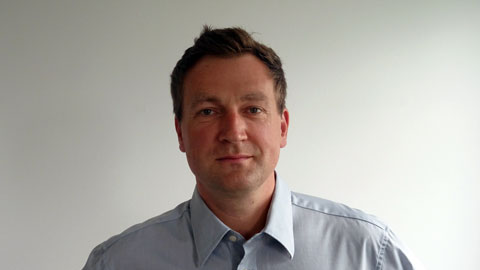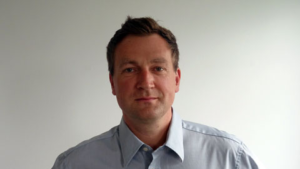
When it comes to asteroids, there are many questions that scientists would like to answer. To get those answers, however, often requires building a spacecraft to go to the asteroids themselves – and that is where the engineers like Dr Albert Falke come in.
An engineer at Airbus Defence and Space GMBH, Albert is also the Technical Supervisor of the NEO-MAPP team. As I discovered when I joined him on a zoom call, asteroids and other minor bodies of the solar system are in his blood, and he takes pleasure in finding new ways to make missions succeed.
Albert’s first astronomical project was as a school pupil, taking pictures of comet Hale-Bopp. The celestial visitor swung close to Earth in 1997 and was visible for more than a year to the naked eye. It began Albert’s fascination with the minor bodies of the solar system, such as comets and asteroids. After gaining his PhD in aerospace engineering, he joined the European multinational aerospace corporation Airbus. Once there, he soon became responsible for the company’s asteroid-related activities.
In collaboration with fifteen partners across Europe, including the prestigious French National Centre for Scientific Research (CNRS) and Germany’s space agency, DLR, Albert was part of the Airbus team that participated in the NEOSHIELD and NEOSHIELD-2 studies.
NEOSHIELD took place between 2012 and 2015. It studied the different ways to deflect asteroids. These included kinetic impact, where the asteroid it struck by something to deflect it; gravity tractors, where a heavy spacecraft sits next to an asteroid and uses gravity to gradually pull the asteroid onto a different path; and blast deflection, where a large detonation vaporises the surface layers of the asteroid, which then work like a jet engine to push the asteroid on to a new orbit.
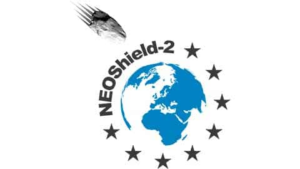 The second study took place between 2015 and 2017 and addressed the gaps in our knowledge that NEOSHIELD had highlighted. Firstly, the behaviour of an asteroid when struck during a deflection attempt was not well understood, and so NEOSHIELD-2 focused on computer modelling this reaction.
The second study took place between 2015 and 2017 and addressed the gaps in our knowledge that NEOSHIELD had highlighted. Firstly, the behaviour of an asteroid when struck during a deflection attempt was not well understood, and so NEOSHIELD-2 focused on computer modelling this reaction.
Secondly, the study looked at the technology needed to actually strike an asteroid. Key components are guidance, navigation and control. The kinetic impactor must hit its target with extreme precision while travelling at an incredible 10–15 kilometres per second. “This is nearly unimaginable,” says Albert, “Five seconds before the impact, you’re 50 kilometres away from the object, and you really need to hit it very close to the centre. It is very challenging to implement such high performance GNC algorithms.”
The algorithms need to run autonomously and in real time on the spacecraft, but computers that can survive in space are not as fast as the ones here on Earth. So, NEOSHIELD-2 looked at how to develop such systems and has come a very long way from where it started.
In many ways, NEO-MAPP is a continuation of the work started in the NEOSHIELD projects. NEO-MAPP features a large scientific component of asteroid modelling and instrument development. In terms of modelling it seeks to understand asteroid interiors, and by extension how an asteroid might behave in the case of a deflection attempt. In the case of instrument development, it seeks to refine the technology needed to return the data needed for the models to do their work.
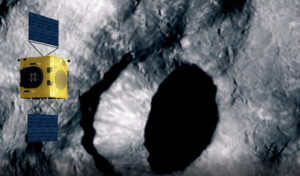
ESA’s HERA mission is a principal concern for NEO-MAPP. Credit: ESA – ScienceOffice.org
These are not just abstract studies any more. Much of NEO-MAPP’s work is related to ESA’s Hera mission. Launching in October 2024, Hera is part of the European-US Asteroid Impact & Deflection Assessment (AIDA). The US part is NASA’s Double Asteroid Redirection Test (DART) spacecraft, which launches in July 2021. DART will impact the asteroid Dimorphos to try to minutely shift its orbit and then Hera will scientifically study Dimorphos to characterise the asteroid and assess the effect of the DART impact.
As Technical Supervisor to NEO-MAPP, Albert’s role is to coordinate the Airbus contributions to the project. He also makes sure that the various partners are working well together by finding synergies between their efforts. Additionally, he oversees the development of a microlander that Hera will deploy to land on Dimorphos. “This is a challenging aspect, because when you have a very small satellite lander, you have only limited equipment which you can use but you still need to ensure a safe landing onto the surface of the asteroid. As you may imagine, asteroids have a very small gravity field.” says Albert.
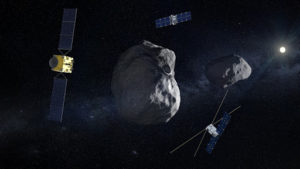
ESA’s HERA mission will make use of two CubeSats, including one that will land on Dimorphos. Credit: ESA – ScienceOffice.org
Indeed, it is so weak that the pressure of the sunlight shining on the microlander can sometimes be similar in strength to the asteroid’s pull of gravity. In other words, the lander won’t fall straight to the surface, instead its trajectory will be highly disturbed, making it even harder to control and ensure a safe landing.
While HERA remains the clear focus for NEO-MAPP’s efforts, Albert and the whole team also have an eye on future missions too. “The technologies that are going to be developed for Hera are also applicable to any other small body mission,” he says. For example, there is a close pass of asteroid Apophis in 2029 that may present an opportunity for another mission.
At the beginning of the studies Albert jokes that he felt like he was part of a Hollywood blockbuster. “It was like being face to face with Bruce Willis!” he says. But now the work has become much more detailed, and if there is one thing that Albert thrives upon, it’s problem solving.
“To develop missions and systems, for instance, to explore an asteroid or a comet or something else in a really inhospitable environment that’s not very friendly to technology: that’s my motivation.”
With that attitude driving him onwards, NEO-MAPP is the perfect place for him to be.
Read More:
ESA’s HERA mission
Asteroid Impact & Deflection Assessment (AIDA)
NASA’s Double Asteroid Redirection Test (DART)
ABOUT THE AUTHOR:
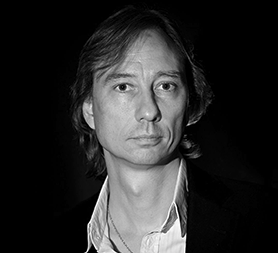 Dr Stuart Clark is Asteroid Day’s Editorial Director. He is an award-winning science journalist and author, with a first class honours degree in astronomy and physics, a PhD in astrophysics, and an honorary DSc for “services to astronomy and the public understanding of science”. A Fellow of the Royal Astronomical Society in the UK, he writes the Guardian’s Starwatch and Spacewatch columns. His latest book is Beneath the Night: how the stars have shaped the history of humankind (Faber).
Dr Stuart Clark is Asteroid Day’s Editorial Director. He is an award-winning science journalist and author, with a first class honours degree in astronomy and physics, a PhD in astrophysics, and an honorary DSc for “services to astronomy and the public understanding of science”. A Fellow of the Royal Astronomical Society in the UK, he writes the Guardian’s Starwatch and Spacewatch columns. His latest book is Beneath the Night: how the stars have shaped the history of humankind (Faber).

